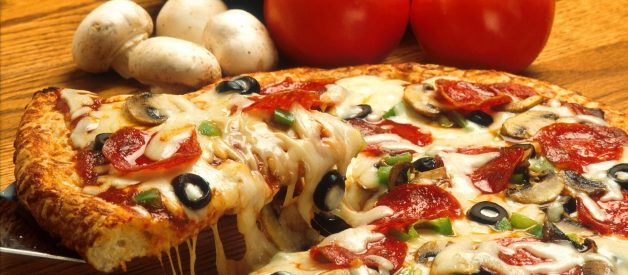Every athlete we know is at least a little bit interested about how to balance calorie intake and burn for maximum workout results. For some of us, this is more like an obsession! We believe that every athlete should understand how many calories they burn when working out because this info helps inform important nutrition and recovery decisions. All other things being equal, if you are training hard, you?re burning more calories than a person who isn?t (at least while training). You?ll want to factor that caloric deficit into your calculations when choosing the right post-workout foods to aid a more efficient recovery. In this article, we?ll focus entirely on the math behind measuring calories burned, with the intent of enjoying some guilt-free pizza.

The basic calorie burn equation
Calories burned in a session is Time Climbing * Caloric Burn Per Hour.

Let?s break it down.
Step one: Find the average number of calories burned per hour.
We at ChalkPrint don?t have a lab so we?ll rely on the same tools you do ? the internet. We found a range of claims, between 500 and 900 calories per hour (including a fascinating calculation of calories burned while rappelling). For the sake of simplicity, let?s call it 700 calories for the remainder of this post. That is not accounting for any of the complex factors that go into calculating caloric burn.
If you?re using ChalkPrint, you can set your own calorie per hour rate in user settings on the More tab and then ChalkPrint will use that to determine your session calorie burn.
 ChalkPrint?s calorie setting
ChalkPrint?s calorie setting
Step two: Figure out how long you spent training.
Let?s say you go to the gym and spend 3 hours bouldering. You do your math and get this:
3 hours * 700 calories per hour = 2,100 calories!YES! Give me a pizza!
Yeah, nice try. Obviously, that?s not right. When you weren?t climbing, you were probably resting, talking, sharing some beta? So, how much time were you actively climbing? To estimate, you could just mentally split your session in half, like we used to?
3 hours * 50% * 700 calories per hour = 1,050 calories!That?s still half a pizza!
But let?s get real ? that isn?t right either. You?re still just guessing. So, what should you do?
If you want more accuracy, you could bring a stopwatch or use your smartphone to time all of your rests, then time yourself whenever you get back on the wall. We?ve seen people who are really serious about their training try to do this, but it?s a giant pain in the ass! It?s also not as accurate as we?d like, given the number of times we forgot to hit the stopwatch because we were too busy chatting with our friends.
If you?re using ChalkPrint, though, you?re in luck. Time Spent Climbing is one of the first questions we set out to answer with the app. ChalkPrint quietly records when you are climbing without any interaction from you. At the end of your session, you?ll know exactly how long you actually climbed.
So for real, how many calories did that climbing session burn?
Even with the ambiguity around the approximate 700 calories we estimate we?re burning per hour, we now have more data than we had before. Let?s say our actual time on the wall within that three hour session is 30 minutes. (Note: We?re dividing the total calories per hour by 60 to arrive at the calories burned per minute.)
30 minutes * (700cal/60) = 350 calories.I can have a slice or two?
Of course, one session isn?t the same as another for me and my session is different from your session. If I work particularly hard during one session I might bump up the base calorie rate to 800 so that same session might result in 400 calories burned instead of 350 allowing me some extra cheese.
If this all sounds rather vague, that?s because it is. But, it is closer to reality than before. Determining your caloric burn requires many variables that your phone cannot detect. ChalkPrint provides one of the most crucial of those variables ? Time Climbing ? to get you closer to understanding the full picture.
Great! What should I do with this information?
Open your favorite calorie tracking app (we like MyFitnessPal), enter your calories burned, and consider what you?ll eat for recovery. Pizza may not be the best choice but it is delicious. For a deep exploration of nutrition for climbers, check out Aicacia Young?s comprehensive ebook aptly named Rock Climbing Nutrition. Also check out Training Beta, run by Neely Quinn, a nutritionist and great podcaster who has some great articles about nutrition like 3 Common Nutrition Mistakes Climbers Make and How to Lose Weight Climbing. Or for a slightly tongue-in-cheek yet totally necessary science-based article on whether a post-session beer is good for you, check out Recovery Beer: Fact or Fiction by Elliott Natz.
Time Spent Climbing is a great measure for a lot more than calorie calculations! Stay tuned for more articles about exactly how to use this metric to improve your climbing.
(Reprinted from Chalkprint.com)


